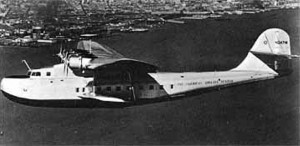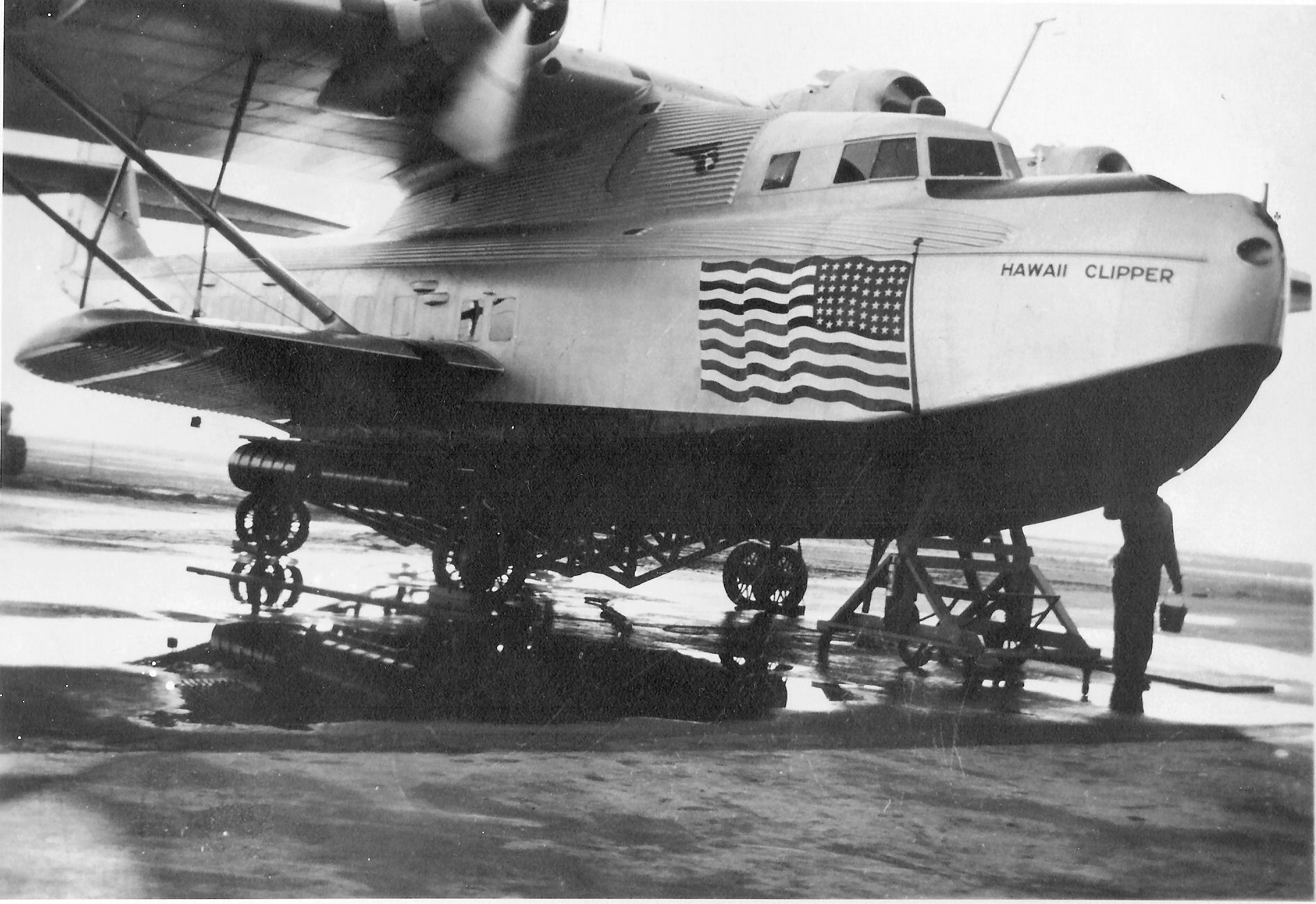Alright – I have a confession to make.
I am NOT an aviation history buff, by any stretch of the imagination.
So when our Blogging in Formation group decided on an “Aviation History” theme for November (which is Aviation History Month after all), I was a little freaked out. Don’t get me wrong; I know the stuff pilots need to know (the Wright Brothers are from Dayton, OH, and they were the first to fly a heavier than air aircraft, in Kitty Hawk, NC, on December 17, 1903; Amelia Earhart disappeared over the Pacific during her round-the-world flight attempt; Eddie Rickenbacker flew the Spirit of St. Louis across the Atlantic using only tape, yarn, and a housefly for navigation, and a wifi camera to see outside the airplane, etc.).
So you can see my dilemma – history is not my forte. Never has been.
But history is full of incredible, interesting, amazing stories and people and mysteries. It is unbelievable to me that more movies are not made about them. People love a story about black sheep becoming heroes, or the life of a soldier who crawled out on the wing of a burning airplane to save it and its crew.
But the mysteries – those are the ones that just grab people’s attention and never let go. They keep coming back up and popping into your head. Amelia’s airplane might be found! What happened to Flight 19 in the Bermuda Triangle? How did Bruce Gernon lose 100 miles and 30 minutes of flight through the same Bermuda Triangle?
But here’s another one I’d never heard of until I started researching topics for this post: The Mystery of the Hawaii Clipper.
75 years ago, on July 29th, 1938, a Martin M-130 seaplane owned and operated by Pan American Airways departed Guam en-route to Manila, toward a final destination of Hong Kong. On board were only six passengers and nine crew, with Leonard Terletzky serving as Captain.
A little bit about Pan-Am’s M-130s:
All metal, high-wing flying boats that were 91-feet long, 25-feet tall, and had a wingspan of 130 feet. Instead of pontoons near the wingtips, the M-130s had “sponsons” – also known as “sea wings.” They were located near the waterline, adding stability on the water. They also provided some lift in flight. The planes had four 950 horsepower radial engines, but could stay aloft with only two running. It had dual flight controls, a double hull, and a Sperry autopilot. There were six watertight compartments, and the plane could stay afloat with only two of them remaining watertight. There were three radios aboard (primary, auxiliary, and emergency), a saltwater still, hundreds of marker balloons, life rafts, flares, a shotgun, fishing gear, and food that could keep 15 people alive for a month. The Hawaii Clipper also had four “international orange” stripes painted on top of the wings to make it easier for search and rescue to find, if it became necessary.
The crew was very experienced as well – Captain Terletzky had more than 9000 hours, and 1600 in the M-130 flying across the Pacific. The other pilots all had more than 1000 hours total time.
The flight gave position reports every 30 minutes. At 12:11pm, the following report was sent:
“Flying in rough air at 9100 feet. Temperature 13 degrees centigrade. Wind 19 knots per hour…. Position Latitude 12 degree 27′ North, Longitude 130 degree 40′ East dead reckoning… Rain…sky above covered by stratocumulus clouds, base 9200 feet…[flying last half-hour] on instruments.”
When the radio operator on the ground attempted to make contact one minute later (at 12:12pm), there was no response from the Hawaii Clipper – and no contact was ever made again.
After a while attempting to contact, and no new report was made the next half-hour from the plane, at 12:49pm the ground operator told all stations to monitor emergency frequencies and that the Hawaii Clipper was missing. The last report put the plane only 300 miles from the Philippine coast.
After about eight days of searching (and 160,000 square miles of ocean had been covered), the search for the Hawaii Clipper was suspended. The only thing that was found was an oil slick that was determined to have been bilge water from a ship. No trace of the Hawaii Clipper (or any indication of an accident) was ever found.
Theories and Conspiracies
I find it interesting that I had never heard of this mystery before. I guess no alien theories have been put forward yet, or you can bet it would have been on the History Channel (this is what dreams are made of if you happen to be a producer there).
Did the Japanese shoot it down? Japan had recently invaded China, after all, and there was $3 million worth of gold certificates on the Hawaii Clipper on its way to China (oh yes – that’s something like $50 million in today’s dollars).
Stories of 15 Americans executed by the Japanese and buried under a concrete slab on an island were (and are) floated around.
Charles N. Hill wrote a book in 2000 called Fix on the Rising Sun: The Clipper Hi-jacking of 1938 which speculates that the Hawaii Clipper was hijacked by two Japanese soldiers who stowed away in the baggage compartment at Guam.
The airplane’s manufacturer had concerns about the sponsons, for a fact. So possibly the plane simply had a structural failure? But then why was no wreckage or other indication of an accident ever found? The Pacific is big, I guess, and had swallowed up Amelia Earhart only the year before.
After World War II, reports of the Hawaii Clipper (repainted in Japanese colors) found in Japan also were told. It was also reported that Japanese aircraft engines with magnetos from the Hawaii Clipper were found, though no “real” support for either of these rumors exists.
A strong theory is one from Horace Brock, who wrote in Flying the Oceans that the Hawaii Clipper simply “ran into a very bad storm.”
No matter what actually happened, and unless we ever find conclusive evidence that solves this mystery, simply add this to your list of other mysteries that keep you up at night. Below is my suggested list to get you started:
- The Bermuda Triangle
- Amelia Earhart & Fred Noonan
- Area 51
- JFK’s assassination
- The correct grammatical usage of to, too, and two and there, their, and they’re.
- How much wood COULD a woodchuck chuck?
That should get you started on at least a couple sleepless nights, letting your mind try to figure out the solutions. What else keeps you wondering?
Don’t forget to check out the other Blogging in Formation posts this month:
Friday November 1st Cap’n Aux – Eric Auxier
Saturday November 2nd iFlyBlog – Brent Owens
Sunday November 3rd Airplanista – Dan Pimentel
Monday November 4th Smart Flight Training – Andrew Hartley
Tuesday November 5th Flight to Success – Karlene Petitt
Wednesday November 6th House of Rapp – Ron Rapp
Andrew Hartley is a certificated flight instructor and commercial pilot in Columbus, OH. He sometimes believes as many as six impossible things before breakfast. And he appreciates you visiting his site. Subscribe to the SFT blog and the SFT Podcast, and follow on Facebook, Twitter, and Google+. If you want to.














